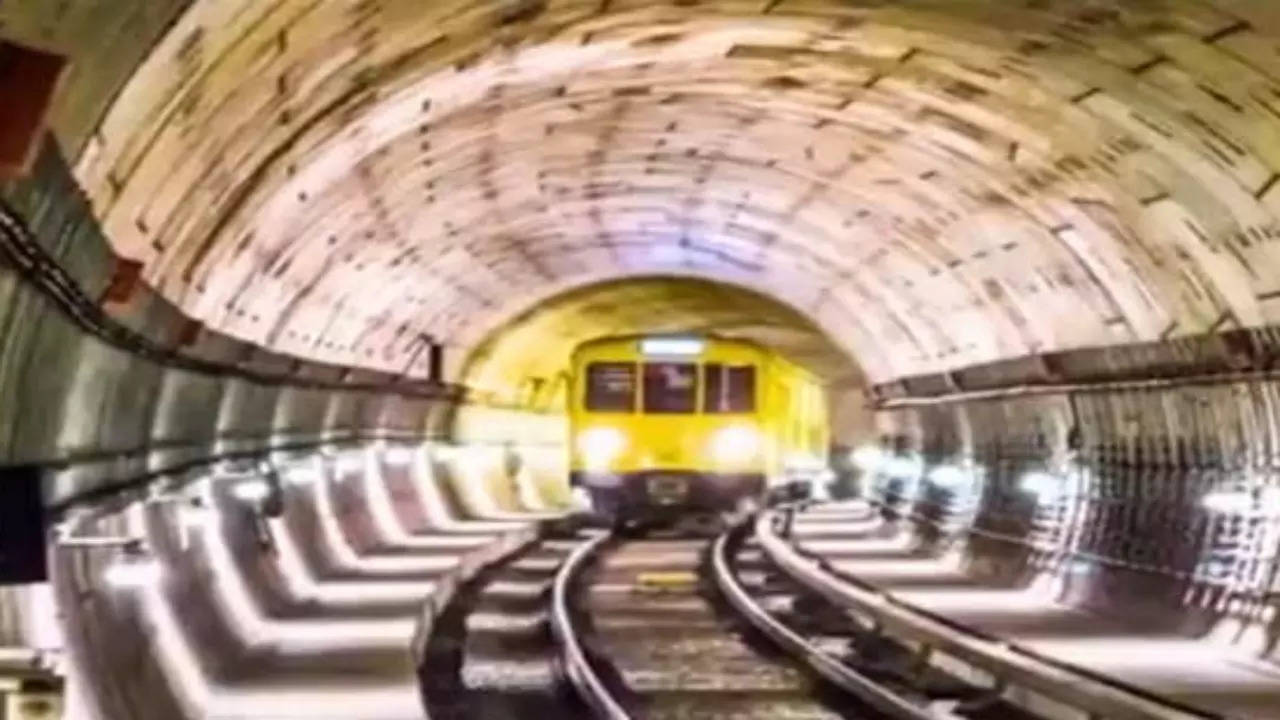India's First Twin-Track Undersea Rail Tunnel To Be Built in Thane Creek | Spotlight
Mumbai-Ahmedabad High-Speed Rail Corridor: Nearly 7-km undersea tunnel at Thane Creek, situated in the inter-tidal zone, will be the first undersea rail tunnel in India. It is a part of a 21-km-long tunnel of Country's High-Speed Rail corridor that will connect the underground station at Bandra-Kurla Complex (BKC) to Shilphata in Maharashtra.

Updated Jun 9, 2023 | 01:16 PM IST

India's first undersea rail tunnel to be built in Thane Creek as part of Mumbai-Ahmedabad High Speed Rail Corridor | Representational Image
Mumbai: Work to build India's first 7-km-long twin-track undersea rail tunnel in Thane Creek is seeing progress with the National High Speed Rail Corporation Limited (NHSRCL) signing a contract with Afcons Infrastructure Limited marking the start of the construction process.
"The construction of a 21-km tunnel is one of the most challenging contracts of the Mumbai-Ahmedabad High-Speed Rail corridor ," said Rajendra Prasad, managing director of NHSRCL. Three tunnel boring machines and the new Austrian tunnelling method will be used for this tunnel's construction, Prasad added.
Undersea rail tunnel at Thane Creek
- The nearly 7-km undersea tunnel at Thane Creek, situated in the inter-tidal zone, will be the first undersea rail tunnel in India.
- It is a part of a 21-km-long tunnel on Mumbai-Ahmedabad High-Speed Rail corridor (
Bullet train corrdor) that will connect the underground station at Bandra-Kurla Complex (BKC ) toShilphata in Maharashtra. - It will consist of a single tube accommodating twin tracks for both up and down trains.
- As many as 39 equipment rooms will be built at 37 locations near the tunnel as part of the project, a spokesperson said.
- The depth of the tunnel will between 25 to 65 metres below the ground level.
One of the largest tunnel boring machines in India to be used
As many as three tunnel boring machines (TBMs) will be used to build nearly 16 km stretch of the tunnel, while the remaining 5 km will be constructed using the new Austrian tunnelling method (NATM).
"One of the largest tunnel boring machines in India will be utilised for this project, featuring a cutter head with a diameter of 13.1 metres. Typically, urban tunnels used in metro systems utilise cutter heads with diameters of 5-6 metres,” explained an official.
Moreover, to facilitate the construction, three shafts will be created at BKC, Vikhroli, and Sawli at approximate depths of 36, 56, and 39 metres, respectively. Another inclined shaft of 42 metres at Ghansoli and a tunnel portal at Shilphata will also aid in building approximately 5 km of the tunnel using the NATM tunnelling method.
End of Article
Videos





02:08
What Are Key Differentiating Points In Poonawalla Fin Corp ? | Explains MD Abhay Bhutada

03:23
Breaking News | BJP MP Accuses Leaders Of 'Adjustment' With Congress In Karnataka, Sparks Infighting

03:38
Manipur Violence Erupts Again As Kukis, Meiteis Refuse Peace Talks| 9 Killed In Flare-Up

03:03
How MD of Poonawalla Fincorp Abhay Bhutada Started His Career ? | Business News

03:56
TMC Workers Clash In West Bengal Ahead Of Upcoming Panchayat Polls | Election News













